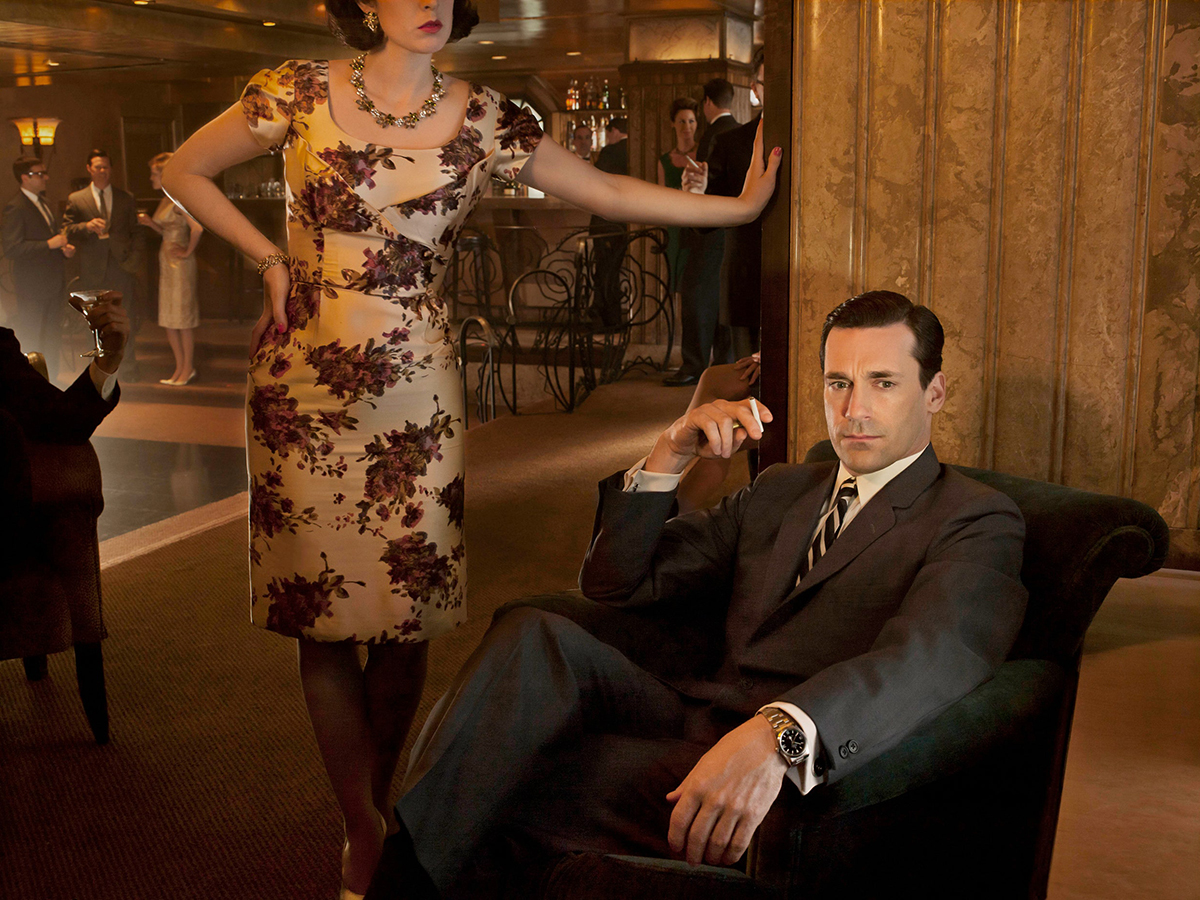
When discussing America in the 1960s, there is a certain element of unending fascination that is always present in those conversations. It was a time of rapid change and recurring turmoil, the historical events most of us first learned about through the pages of a cumbersome textbook in high school U.S. history classes. However, 1960s America is one of those topics we want more of — beyond just a rudimentary understanding. It’s why there have been countless documentaries made about everything from the exploding music scene (rock ‘n’ roll and the “British Invasion”) to the unprecedented landing on the moon and the creation of “the pill.” When it comes to film and television, few shows have been able to both fully encapsulate what life was like in the ‘60s, while giving us characters with real human problems that we can relate to, like “Mad Men.”
Created and written by Matthew Weiner, the series is well-known for its genre-less format. It takes a non-formulaic approach in that each episode tells its own story, allowing its characters to develop as the series progresses, each in their own unique way. The series is set in New York City and spans the entire decade of the ‘60s. The main protagonist, Don Draper (Jon Hamm), is an emotionally impenetrable creative director with an ambiguous past and an unhealthy appetite for infidelity. Aside from the adultery, he’s living what seems to be a fully realized American dream — a self-made man working as an important executive for an agency on Madison Avenue who has a wife, two kids and an office with its own minibar. Of course, nothing is the way it seems, and in Don Draper’s case, this is especially true. Essentially, the same can be said about every character on the show. While it’s clear that the show is exploring the inner workings of high society in the ‘60s, it is also clear that most of its characters — if not all — are battling with the consequences of assimilating into this picture-perfect society, suppressing their own identities in the process.
The series has received praise over the years for its inclusion of historical events, such as the realistic depiction of public reactions to the Kennedy Assasination and the Democratic National Committee riots in 1968. As if historical accuracy done right wasn’t enough, the fashion alone in this series is enough to catch the attention of any viewer. As someone who is woefully ignorant about what constitutes “fashion” in the first place, there is no question that costume design in this series played a critical role in its success, and it was a big reason why I stuck around to see the series in its entirety in the first place.
Despite the social progress and brimming innovation that took place during the ‘60s, illicitness and abuse remained as pervasive then as it is now. “Mad Men” did not shy away from depicting the debauchery that was tightly concealed under the guise of a picturesque society. The rampant, often cruel sexism is almost painful to watch. But it’s the way in which the show’s female protagonists respond that makes the viewing so rewarding. While the women in the series are largely relegated to secretarial roles, they do not remain in the same place they began as the series progresses. Peggy Olson (Elisabeth Moss) is first introduced to us as the “new girl” during her first day on the job as a secretary. From the onset, we can recognize that she is clearly an integral part of the story, as she unwittingly uncovers an advertising campaign for “Belle Jolie” lipsticks during a secretary brainstorming activity. In the same vein, Joan Holloway (Christina Hendricks) is first introduced to us as the snarky office manager, and the little screen time she initially receives consists largely of her unsavory entanglement with an accounts executive. However, it quickly becomes apparent that her organizational skills as an office manager extend far beyond running a secretarial pool and may even be a centerpiece for the ad agency’s success.
Among other things, alcoholism, relentless chain smoking and adultery, all have massive consequences on the trajectory of the show’s characters. While it’s not immediately obvious and presented to us as merely a social norm that everyone seems to be okay with, it becomes clear that it’s those same vices that hamper any remnant of progress for most of our central characters.
Simply put, the series teeters on the edge of perfection. Matthew Weiner’s brilliant writing makes for flawed characters that are simultaneously compelling. The acting is at times even better, as we often are able to perceive a character’s true motivations via body language alone. Themes of isolation and memory are heavily explored, warning us that the past is not always as whimsical as we may imagine at times. It reminds us that you don’t have to be alone to feel alone, even among the highest rungs of society.








